40 vitamins on food labels
Dietary Supplement Labeling Guide | FDA - U.S. Food and Drug Administration Office of Nutritional Products, Labeling, and Dietary Supplements Center for Food Safety and Applied Nutrition Food and Drug Administration 5001 Campus Drive College Park, MD 20740-3835... Daily Value on the New Nutrition and Supplement Facts Labels 25.2.2022 · The Nutrition Facts label must list total fat, saturated fat, trans fat, cholesterol, sodium, total carbohydrate, dietary fiber, total sugars, added sugars, protein, and certain vitamins and minerals.
Supplement Label | How To Read Vitamin Labels |NOW Foods Percentage of Daily Value - arrow pointing to copy stating: "% Daily Value". Serving Size - arrow pointing to copy stating: "Serving Size 1 Softgel". Here's a quick guide for understanding how to interpret supplement labels in order to get exactly what you're looking for. The first section of the label is the supplement facts label.
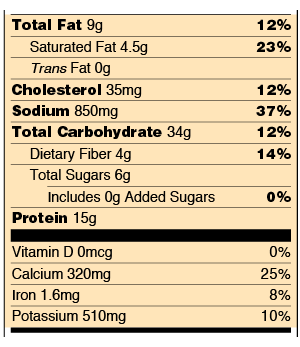
Vitamins on food labels
Why do nutrition labels list 0% vitamins? The only micronutrients that must be listed on a food label are vitamin D, calcium, iron, and potassium. Other vitamins and minerals in the food can be listed voluntarily by food makers. Why may extra vitamins and minerals be listed on a food label? Which Vitamins Must be included on the Food Label? By law, you should mention Vitamin D and its quantity in a particular food product. Not all the other vitamin disclosures you find on the food labels are necessary. However, there is no harm if you voluntarily disclose the other vitamin forms and their quantifiable percentages present in a serving. How to Understand and Use the Nutrition Facts Label | FDA - U.S. Food ... Dietary fiber, vitamin D, calcium, iron ad potassium are nutrients on the label that Americans generally do not get the recommended amount of. They are identified as nutrients to get more of....
Vitamins on food labels. Understanding Nutrition Facts on Food Labels - WebMD After fats, carbohydrates, dietary fiber, sugars, and protein are listed on the food label. These items are followed by specific nutrients in the food, such as vitamin A, vitamin C, calcium, and iron. New label guidelines will replace vitamins A and C with vitamin D and potassium and list added sugars on the panel. Vitamins and Minerals | Nutrition.gov View a list of common foods and drinks and the amount of vitamin D in a standard portion. Interactive Food Label: Vitamins and Minerals HHS , Food and Drug Administration , Center for Food Safety and Applied Nutrition What Supplement Labels Mean, and Don't - Consumer Reports They must be listed in order of the amount the product contains, but the manufacturer doesn't need to state how much of each ingredient is included. As a result, blends may contain dangerously high... Where are the vitamins and minerals on a nutrition labels? The only micronutrients that must be listed on a food label are vitamin D, calcium, iron, and potassium. Other vitamins and minerals in the food can be listed voluntarily by food makers. Related posts by category: How to reverse osteoarthritis diet nutrition supplements naturally?
What's new with the Nutrition Facts label? - Harvard Health 27 Feb 2020 — The list of nutrients that appear on the food label has been updated. Vitamin D and potassium will now be required; vitamins A and C will no ... Food Labels | CDC - Centers for Disease Control and Prevention If you eat the whole thing, you are eating 8 times the amount of calories, carbs, fat, etc., shown on the label. Total Carbohydrate shows you types of carbs in the food, including sugar and fiber. Choose foods with more fiber, vitamins, and minerals. Choose foods with lower calories, saturated fat, sodium, and added sugars. Avoid trans fat. Food labeling: MedlinePlus Medical Encyclopedia VITAMINS AND MINERALS Vitamin D, calcium, iron, and potassium are the only micronutrients required to be on the food label. Food companies can voluntarily list other vitamins and minerals in the food. PERCENT DAILY VALUE (% Daily Value) Many nutrients include a percent daily value (%DV). New Food Label Spotlight: Vitamins and Minerals In the updated label, that same section will jettison vitamin A and vitamin C (the FDA asserts, "In the early 1990's, American diets lacked Vitamins A and C, but now Vitamins A and C deficiencies in the general population are rare"), replacing them with vitamin D and potassium. Calcium and iron will remain on the label.
Whole Food Multivitamin for Men - Natural Multi Vitamins, … Vitamin B6, along with other B vitamins, helps turn food into energy and maintain brain health*. Vitamin B Complex - is the building block of a strong and fit body. Sourced from fermented alive probiotics, it plays a ... you know, because they always have these labels saying they’re not medicine; that they do not have approved ... Food Labels | Nutrition.gov Food labels can help you make healthy choices when buying food in grocery stores or restaurants. Labeling Organic Products. ... Learn what common foods are natural sources of the vitamin folate, plus what foods may have folic acid added during processing. Interactive Nutrition Facts Label. What Vitamins And Minerals Are Required On A Food Label Vitamins Required on Label. Vitamin D and potassium values are required. Vitamins A and C will not be required however could be included on a voluntary foundation. Slight Lower in Sodium Allowance. The day by day restrict for sodium decreased barely from 2,400 mg per day to 2,300 mg per day. This modification matches the advice within the ... The New and Improved Nutrition Facts Label - FDA Vitamin D and potassium are now required on the label because Americans do not always get the recommended amounts. Vitamins A and C are no longer required ...
Learn How the Nutrition Facts Label Can Help You Improve Your Health Nutrients Required on Label Vitamin D and potassium values are required. Calcium and iron will continue to be required. Vitamins A and C will no longer be required but can be included on a voluntary basis. Slight Decrease in Sodium Allowance The daily limit for sodium decreased slightly from 2,400 mg per day to 2,300 mg per day.
Understanding Food Labels | The Nutrition Source | Harvard T.H. Chile implemented the Law of Food Labeling and Advertising in 2016, comprised of mandatory front-of-package (FOP) warning labels, restrictions on child-directed marketing, and the banning of sales in schools of all foods and beverages containing added sugars, sodium, or saturated fats that exceeded set nutrient or calorie thresholds. [1]
How To Read A Vitamin Label | Andrew Weil, M.D. - DrWeil.com "I.U.," stands for "International Unit" and is the standard for measuring fat-soluble vitamins, which include vitamins A, D, E and K. The abbreviation "mg" stands for milligrams, or one-thousandths of a gram, and "mcg" stands for micrograms, or one millionths of a gram. 4.
Understanding Food Nutrition Labels | American Heart Association Remember that the information shown in the label is based on a diet of 2,000 calories a day. You may need less or more than 2,000 calories depending upon your age, gender, activity level, and whether you're trying to lose, gain or maintain your weight. When the Nutrition Facts label says a food contains "0 g" of trans fat, but includes ...
What vitamins are on nutrition labels? What are the four vitamins and minerals that food labels must list? The only micronutrients that must be listed on a food label are vitamin D, calcium, iron, and potassium. Other vitamins and minerals in the food can be listed voluntarily by food makers. Previous post: What vitamins are required on the nutrition label?
On Vitamins and Food Labels - EzineArticles Those labels must also disclose how much of the DV for Vitamins A and C would be provided to a consumer eating one serving of that same product. Present-day labels contain the words "Vitamin A" and "Vitamin C," printed in large letters. Next to each of those words is a number and a percent sign (the DV%).
MegaFood: Food Based Vitamins & Supplements | MegaFood Great product for getting my iron levels up. After my doctor's visit, my lab work showed my iron level was low causing a significant drop in my numbers. I started talking Mega Food Blood Builder and six months later my lab work showed an increase in my numbers. Now that I am taking Mega Food Blood Builder I have more energy and don't worry ...
Vitamins and Minerals for Older Adults - National Institute on Aging 2.1.2021 · Vitamin A. Food Sources: Vitamin A can be found in products such as eggs and milk.It can also be found in vegetables and fruits, like carrots and mangoes. Men Age 51+: Most men 51 and older should aim for 900 mcg RAE. Women Age 51+: Most women 51 and older should aim for 700 mcg RAE each day. Vitamin B1 (Thiamin). Food Sources: You can find vitamin B1 in …
How To Read Food and Beverage Labels - National Institute on Aging At the top of the Nutrition Facts label, you will find the total number of servings in the container and the food or beverage's serving size. The serving size on the label is based on the amount of food that people may typically eat at one time and is not a recommendation of how much to eat. Read more about serving and portion sizes.
Food Labels (for Teens) - Nemours KidsHealth The nutrition facts label on your favorite breakfast cereal tells you it's full of vitamins and minerals. So it must be healthy, right?
Food - Academy of Nutrition and Dietetics This website uses cookies. We use cookies to optimize and personalize your experience, provide relevant content and analyze online traffic. We also share information with our analytics and website partners, who may use it to inform decisions about current or future services.
Dietary Supplement Labeling Guide: Chapter IV - FDA This results in the following order for vitamins and minerals: Vitamin A, vitamin C, vitamin D, vitamin E, vitamin K, thiamin, riboflavin, niacin, vitamin B6, folate, vitamin B12, biotin,...
Nutrition Facts Labeling — FDA Reader Vitamins, Minerals and Macronutrients. The following vitamins and minerals are required on the nutritional label "Supplemental Facts" section. They must be measured in terms of percentage of daily value and weight. The minimum requirement is listed below (must be listed in this order): Vitamin D, Calcium. Iron.
Changes to the Nutrition Facts Label | FDA - U.S. Food and Drug ... Why are vitamin D and potassium being added to the Nutrition Facts label? Vitamin D and potassium are nutrients Americans don't always get enough of, according to nationwide food consumption ...
Food energy - Wikipedia Many governments require food manufacturers to label the energy content of their products, to help consumers control their energy intake. To facilitate evaluation by consumers, food energy values (and other nutritional properties) in package labels or tables are often quoted for convenient amounts of the food, rather than per gram or kilogram; such as in "calories per …
Whole Food Vitamins | Shop Natural & Organic Vitamins and … Buy whole food vitamins and supplements from Naturelo. We offer a product line of the most essential natural vitamins, many of which are made with organic ingredients! Many of our vitamins & supplements are made without preservatives, gluten, or most common allergens. Find whole food vitamins and supplements at Naturelo today.
Converting Units of Measure for Folate, Niacin, and Vitamins A, … Declaring folic acid on a conventional food label is mandatory when folic acid is added or when a claim is made about the nutrient (§ 101.9(c)(8)(iv) (footnote 6)). The label declaration must be
How to Read Supplement Labels Like a Pro - Healthline Regulations on supplements Dietary supplements are products that are intended to supplement your diet. They're available in a variety of forms, including tablet, capsule, liquid, pill, and powder....
Nutrient Claims on Food Labels - Clemson University At least 25% less sugar*. Fiber Claims. (If food is not low in total fat, the label must state total fat in conjunction with the fiber claims.) High fiber. 5 grams or more. Good source of fiber. 2.5 grams to 4.9 grams. More or added fiber. At least 2.5 grams more*.
How to Understand and Use the Nutrition Facts Label | FDA - U.S. Food ... Dietary fiber, vitamin D, calcium, iron ad potassium are nutrients on the label that Americans generally do not get the recommended amount of. They are identified as nutrients to get more of....
Which Vitamins Must be included on the Food Label? By law, you should mention Vitamin D and its quantity in a particular food product. Not all the other vitamin disclosures you find on the food labels are necessary. However, there is no harm if you voluntarily disclose the other vitamin forms and their quantifiable percentages present in a serving.
Why do nutrition labels list 0% vitamins? The only micronutrients that must be listed on a food label are vitamin D, calcium, iron, and potassium. Other vitamins and minerals in the food can be listed voluntarily by food makers. Why may extra vitamins and minerals be listed on a food label?

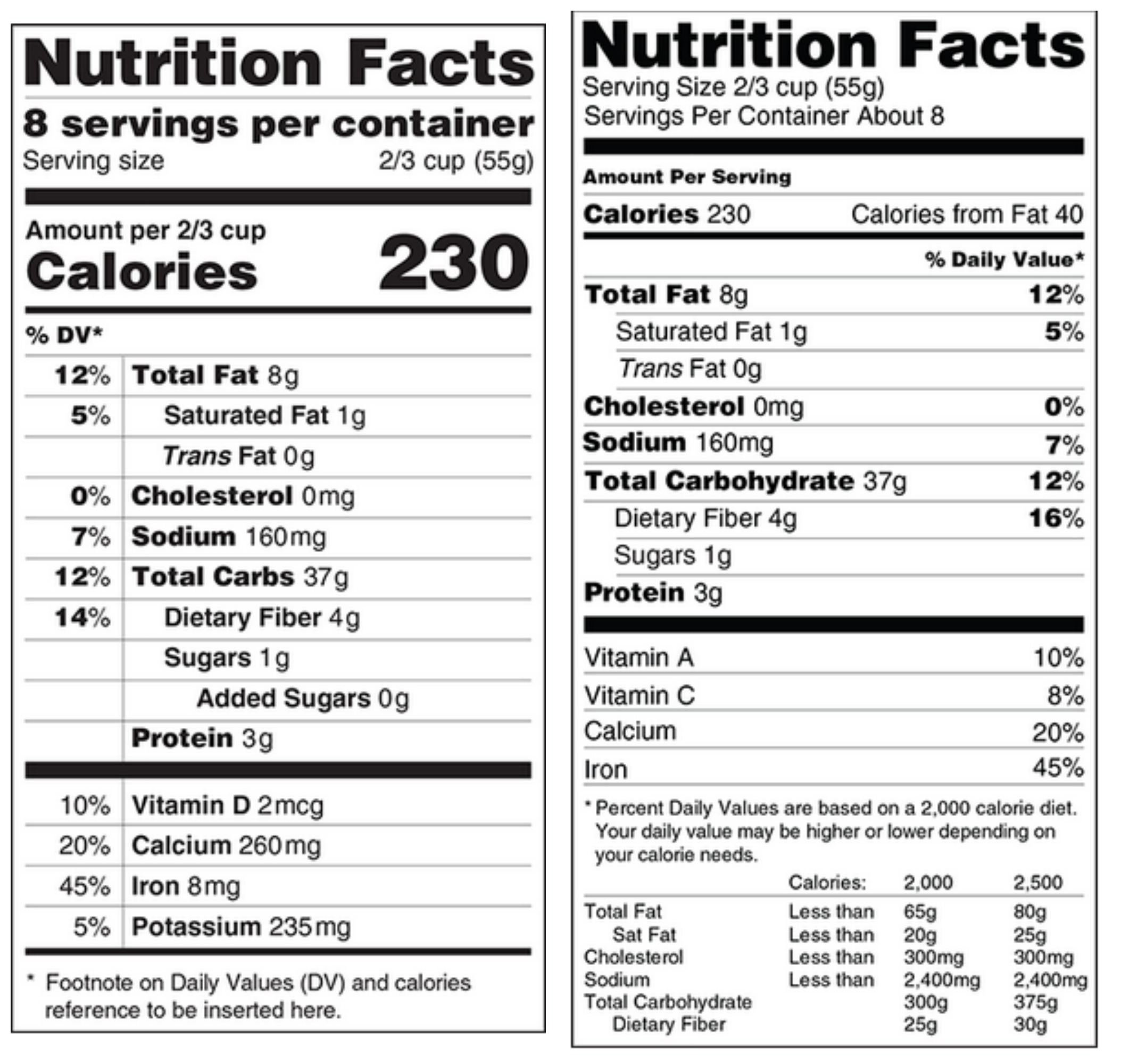
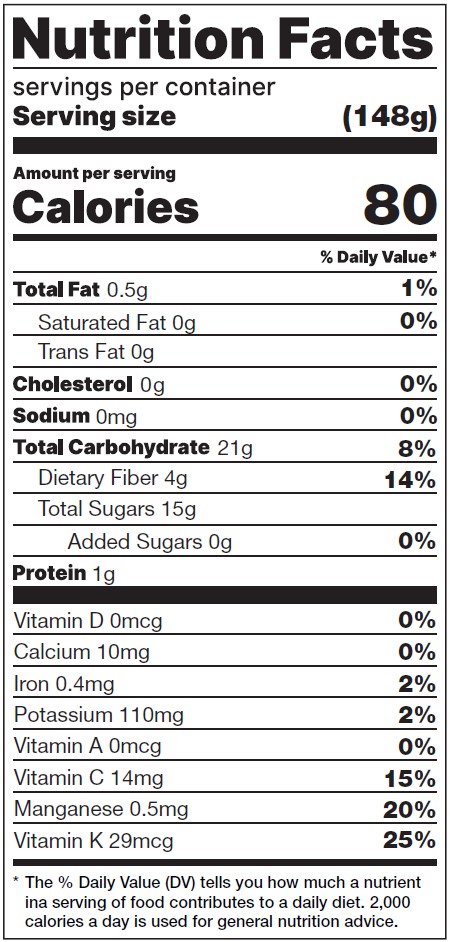

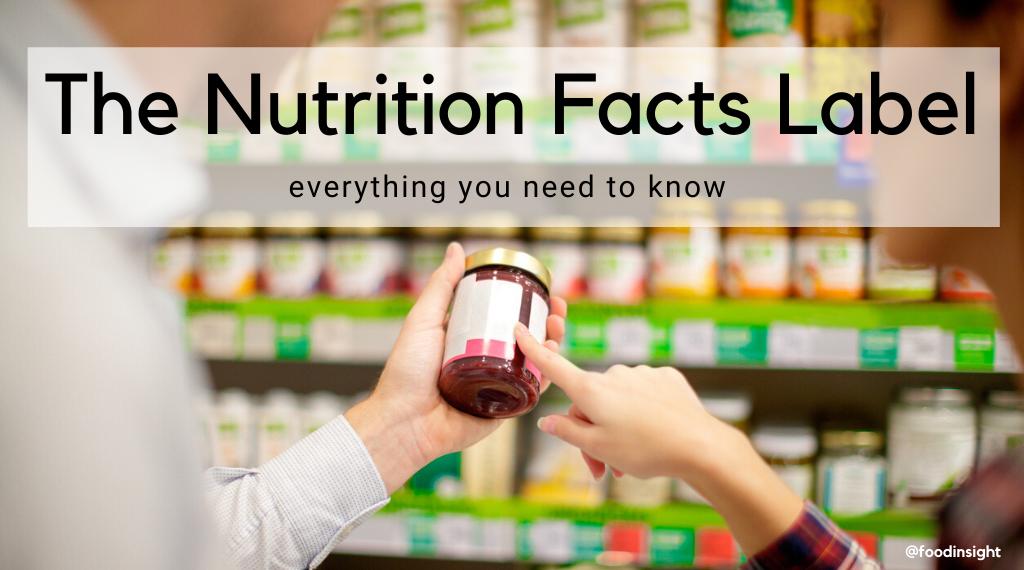
/cloudfront-us-east-1.images.arcpublishing.com/pmn/INOCTUOO5RHTFGCFYIVDUOIKJ4.jpg)





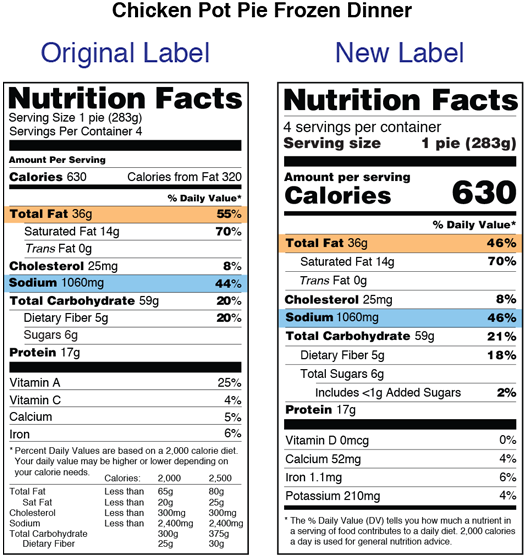


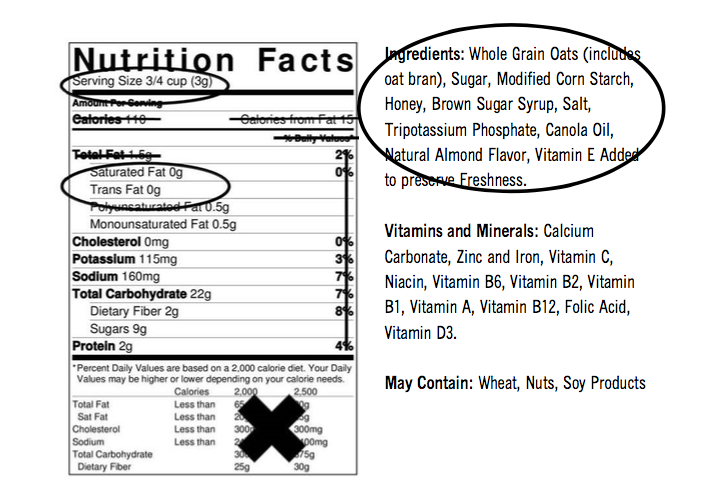
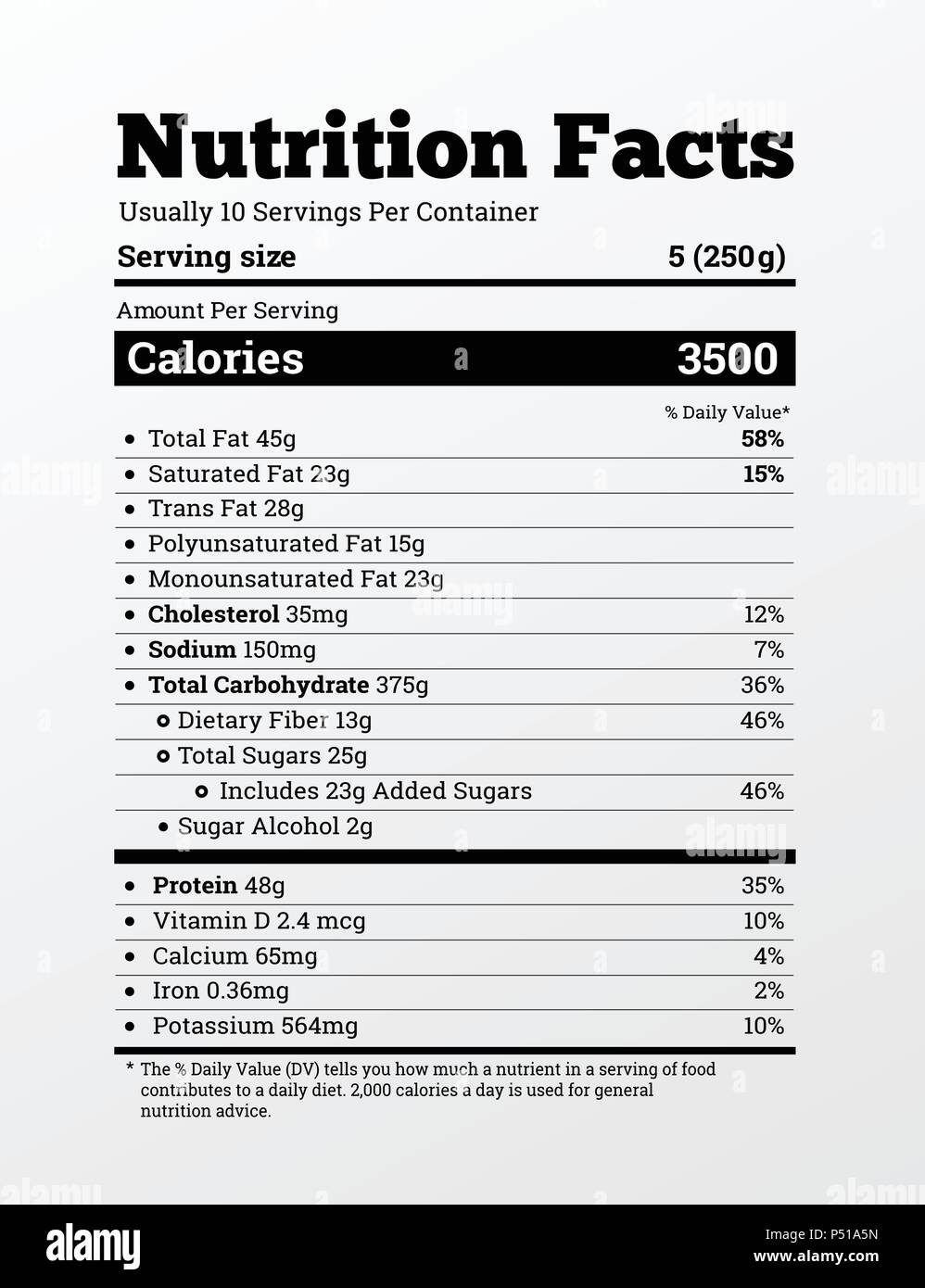

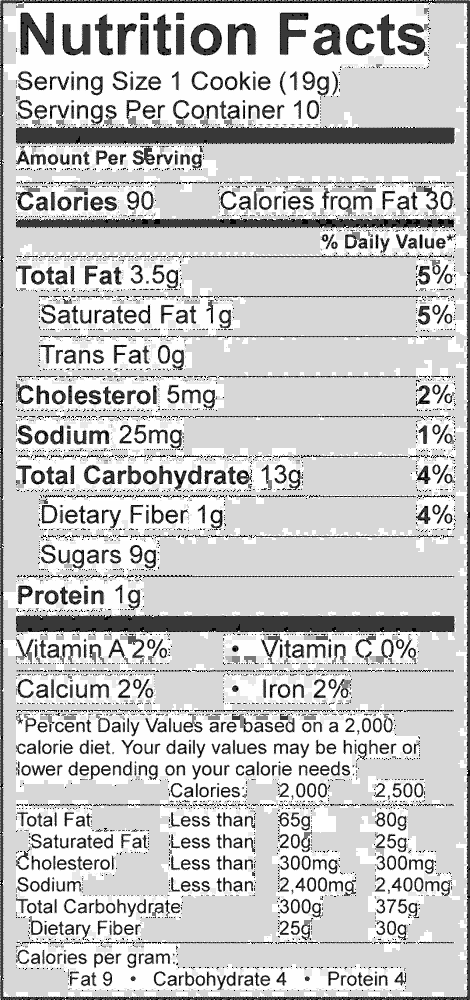
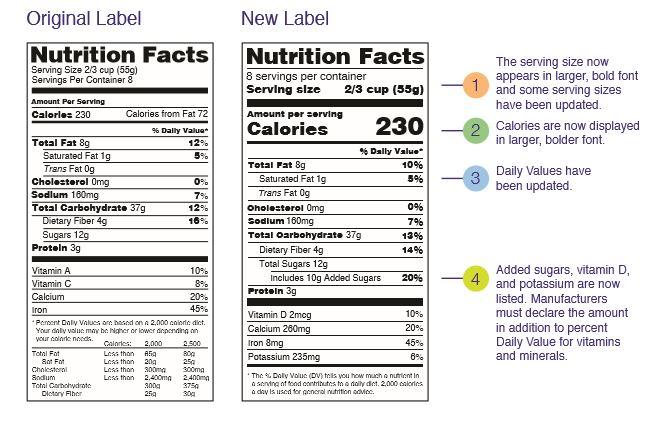




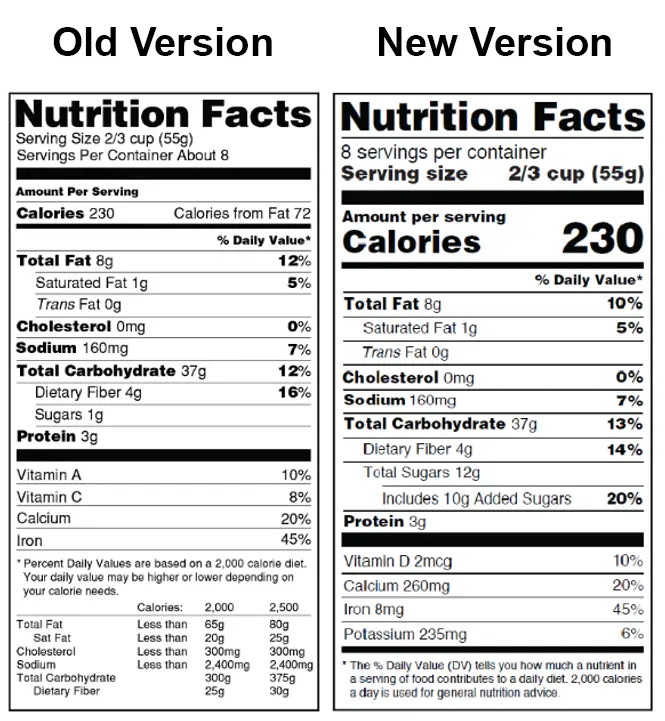

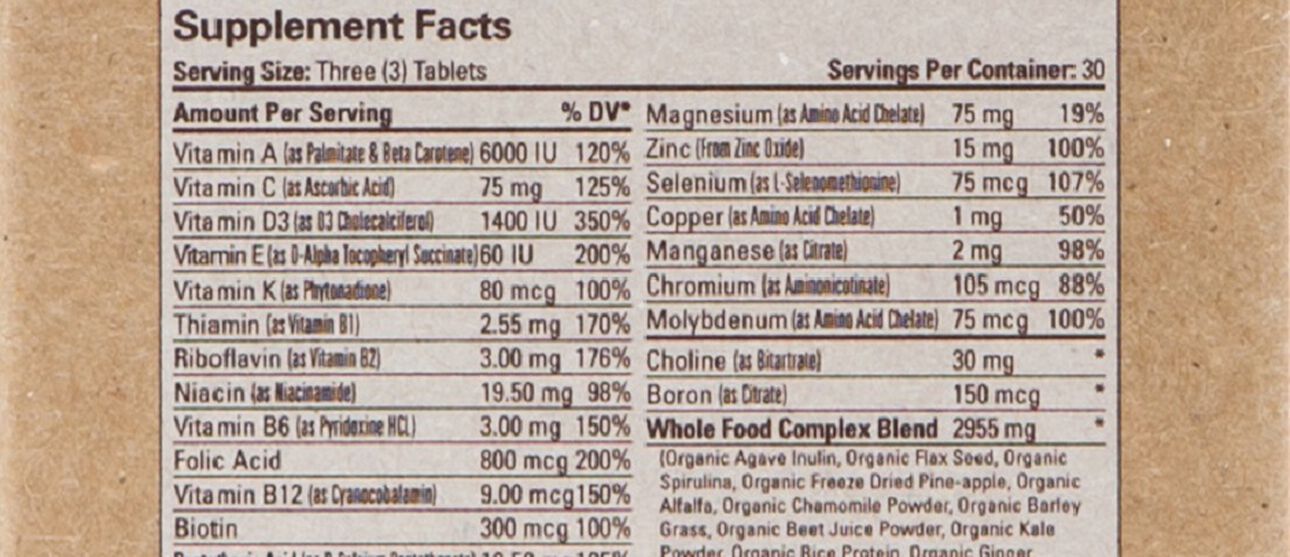

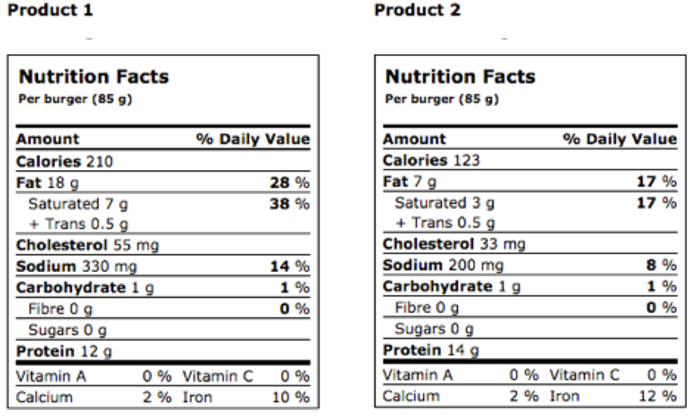
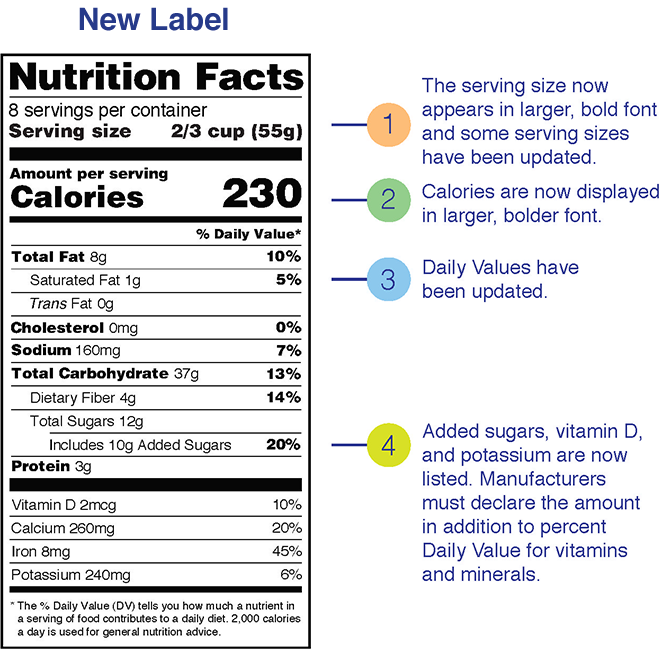

![The FDA's Updated Nutrition Facts Label [Infographic]](https://www.repsly.com/hubfs/Infographics/How%20to%20design%20the%20perfect%20packaging.png)
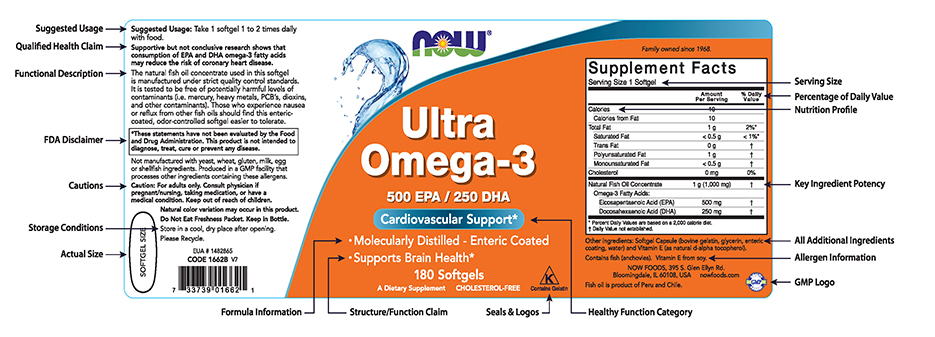


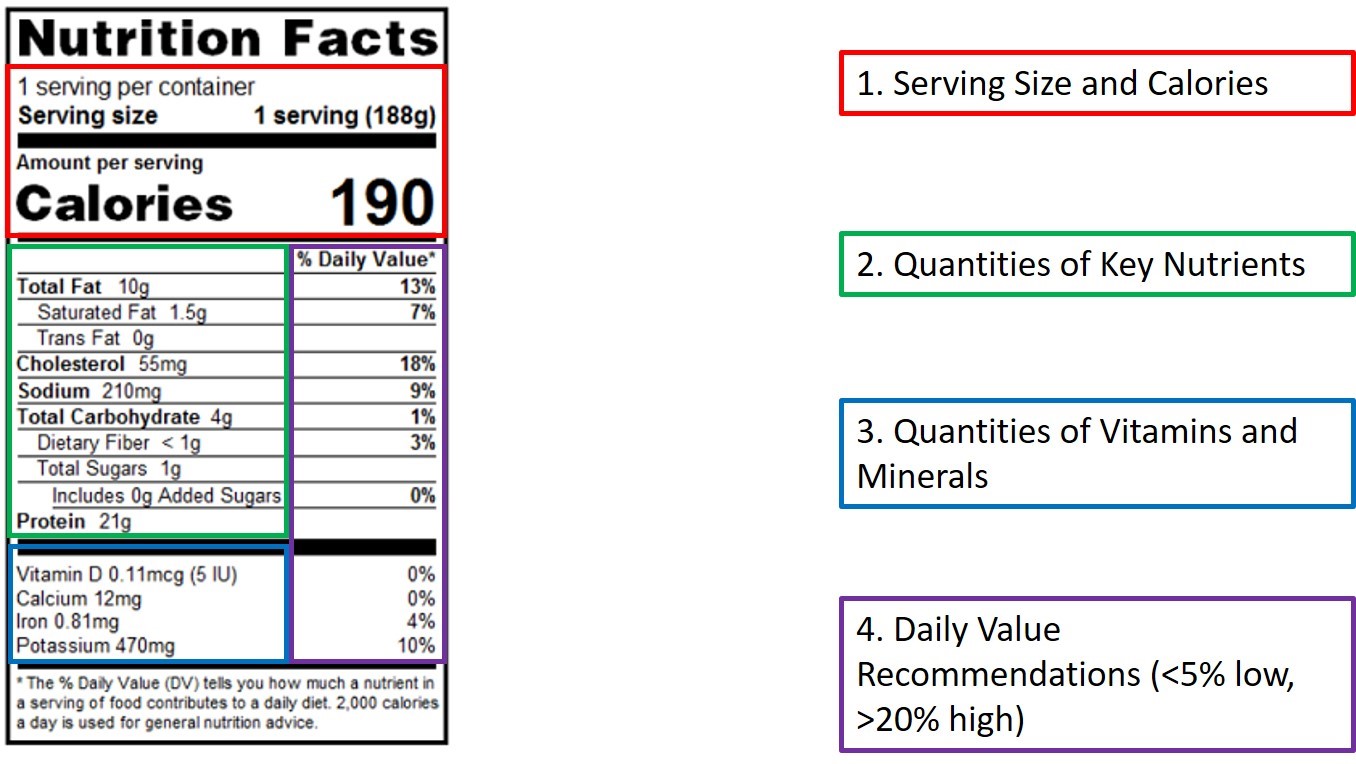
Post a Comment for "40 vitamins on food labels"